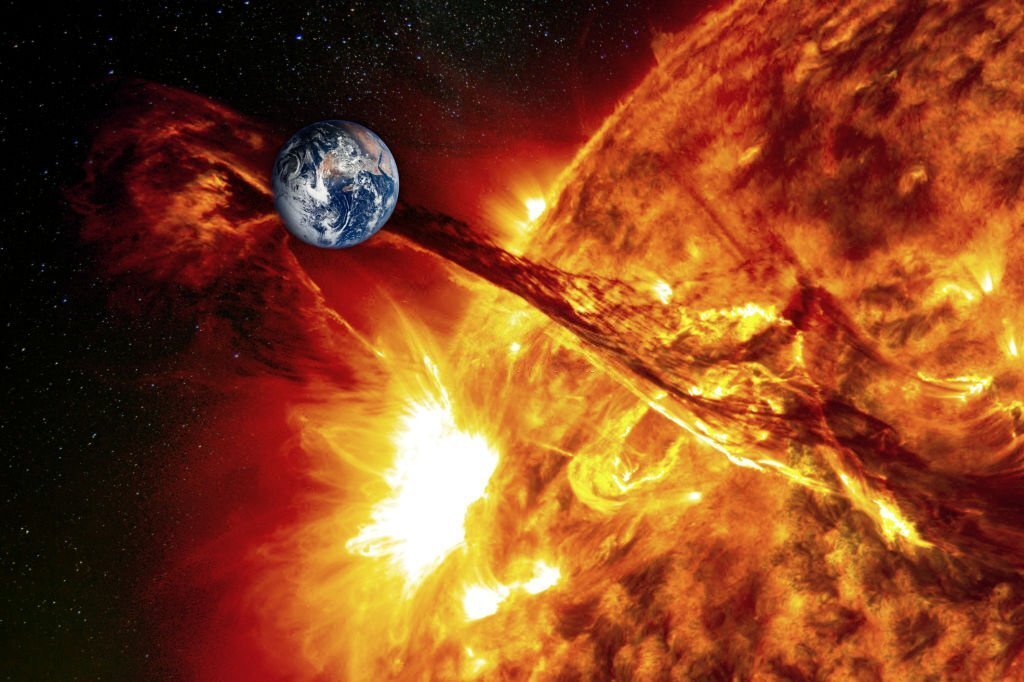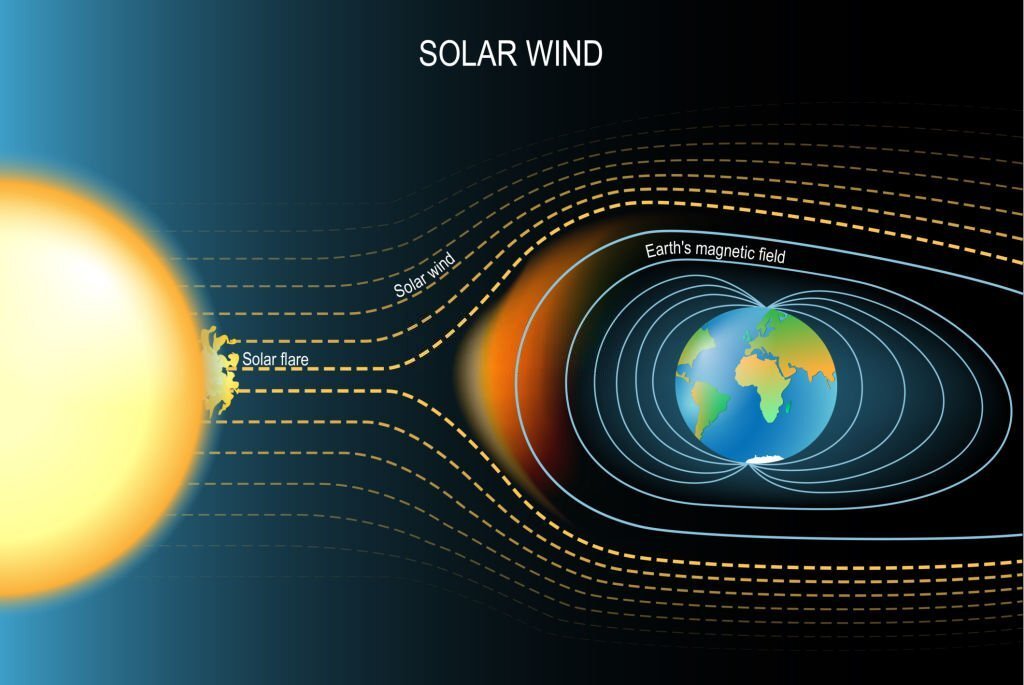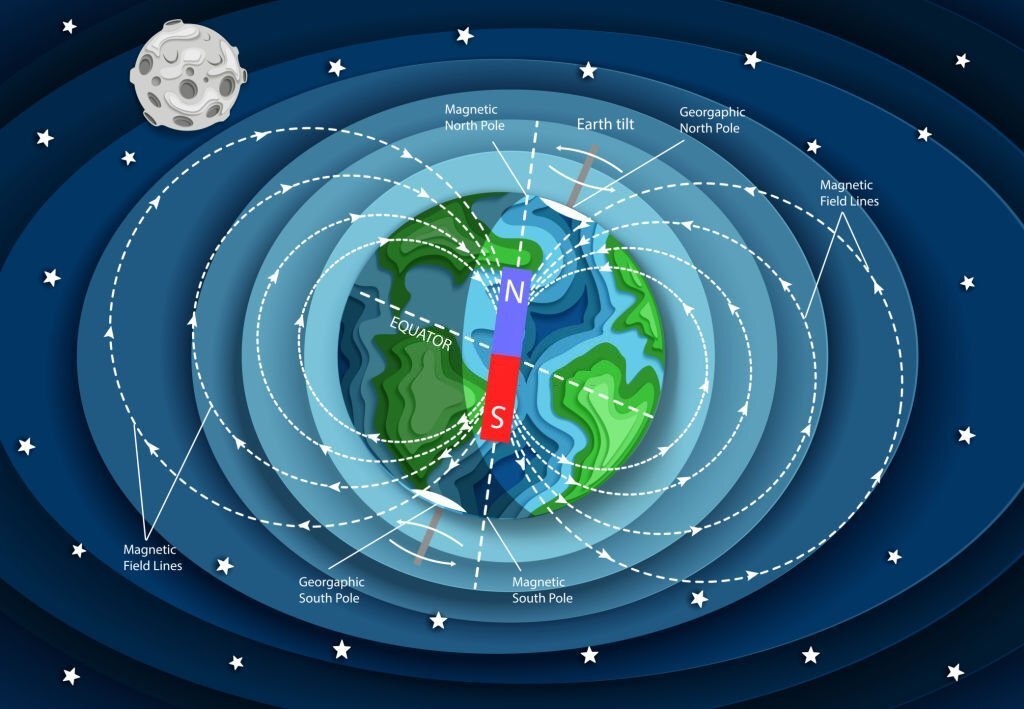Geomagnetic storms, with their captivating displays of colorful auroras and potential impacts on our technological infrastructure, have long fascinated scientists and skywatchers alike. These mesmerizing phenomena, triggered by interactions between the Sun and Earth’s magnetic field, hold secrets waiting to be unraveled. In this blog post, we will dive into the captivating world of geomagnetic storms, exploring their causes, effects, and significance.
Throughout this blog post, we will embark on an exciting journey to understand geomagnetic storms. We will start by delving into the basics, exploring the causes and factors that contribute to these magnetic disturbances. From there, we will uncover the captivating effects of geomagnetic storms, including the awe-inspiring auroras and potential disruptions to our communication systems and infrastructure. Additionally, we will delve into the fascinating world of measuring and predicting geomagnetic storms, shedding light on the tools and techniques used by scientists to monitor and forecast these phenomena. By the end of this blog post, you will have a deeper understanding of geomagnetic storms and their impact on our planet. Let’s dive in!
Understanding Geomagnetic Storms

Definition and explanation of geomagnetic storms:
Geomagnetic storms are intense disturbances in Earth’s magnetosphere caused by interactions between the solar wind and our planet’s magnetic field. These storms occur when there is a significant increase in the energy and particles from the Sun that impact the Earth’s magnetosphere, leading to disruptions in the magnetic field’s stability.
The relationship between solar activity and geomagnetic storms:
Geomagnetic storms are closely tied to solar activity. Solar flares, coronal mass ejections (CMEs), and high-speed solar wind streams are the primary drivers of these storms. Solar flares are sudden bursts of electromagnetic radiation, while CMEs are massive eruptions of plasma and magnetic fields from the Sun’s corona. Both solar flares and CMEs release vast amounts of energy and charged particles into space, which can interact with Earth’s magnetic field and trigger geomagnetic storms. High-speed solar wind streams, which are continuous streams of charged particles flowing from the Sun, can also impact Earth’s magnetosphere and contribute to storm activity.
Role of the Earth’s magnetosphere in the occurrence of geomagnetic storms:
The Earth’s magnetosphere plays a crucial role in the occurrence of geomagnetic storms. It is the region surrounding our planet where the magnetic field is influenced by the Sun’s activity. The magnetosphere acts as a shield, deflecting and trapping the charged particles from the solar wind. However, during intense solar events, such as solar flares or CMEs, the magnetosphere can become overwhelmed, leading to disturbances and fluctuations in the magnetic field. These disturbances can generate currents and induce electric fields in the Earth’s atmosphere, resulting in the dynamic and mesmerizing displays of geomagnetic storms.
Understanding the definition, solar connection, and the role of Earth’s magnetosphere in geomagnetic storms is essential to comprehend the fascinating interplay between the Sun and our planet. By unraveling these concepts, we gain a deeper appreciation for the captivating nature of geomagnetic storms and their impact on Earth’s magnetic environment.
Causes of Geomagnetic Storms

Solar flares:
Explanation of what solar flares are and their role in geomagnetic storms: Solar flares are intense explosions on the Sun’s surface that release a tremendous amount of energy, including high-energy radiation and charged particles. These eruptions occur when magnetic energy in the Sun’s atmosphere is rapidly released. When a solar flare occurs, it can produce a burst of X-rays and ultraviolet radiation, which can ionize the Earth’s upper atmosphere. This ionization can lead to disturbances in the Earth’s magnetosphere, potentially triggering geomagnetic storms.
Coronal Mass Ejections (CMEs):
Understanding how CMEs trigger geomagnetic storms: Coronal Mass Ejections (CMEs) are massive eruptions of plasma and magnetic field from the Sun’s corona. These ejections can expel billions of tons of material into space at high speeds. When a CME is directed towards Earth, it can create a significant impact on our planet’s magnetosphere. As the ejected material interacts with the Earth’s magnetic field, it can compress the magnetosphere, causing magnetic disturbances. If the CME carries a strong magnetic field that is aligned opposite to Earth’s magnetic field, it can result in a process called magnetic reconnection, where the energy stored in the magnetic field is released, leading to geomagnetic storms.
High-speed solar wind streams:
Exploring their impact on Earth’s magnetosphere: High-speed solar wind streams are continuous streams of charged particles, mainly protons and electrons, that are released from the Sun’s atmosphere and travel through space. These streams can be associated with coronal holes, which are regions on the Sun’s surface where the magnetic field allows the solar wind to escape more easily. When Earth encounters a high-speed solar wind stream, it can exert pressure on the Earth’s magnetosphere. This interaction can compress the magnetosphere, enhance magnetic field fluctuations, and contribute to the occurrence of geomagnetic storms.
Understanding the causes of geomagnetic storms, such as solar flares, coronal mass ejections, and high-speed solar wind streams, helps us grasp the dynamic nature of the Sun-Earth relationship. By comprehending these mechanisms, we can better appreciate the processes that lead to the captivating phenomena of geomagnetic storms and their effects on our planet.
Effects of Geomagnetic Storms

Disruptions to satellite communications:
Impact on GPS systems, satellite TV, and communication networks: Geomagnetic storms can have a significant impact on satellite communications. The charged particles and fluctuations in the Earth’s magnetic field during a geomagnetic storm can disrupt satellite signals, leading to issues with GPS systems, satellite TV reception, and communication networks. These disruptions can cause inaccuracies in positioning information, interrupted television broadcasts, and potential communication outages, affecting various sectors relying on satellite-based technologies.
Power grid disturbances:
Exploring the potential for power outages and electrical system disruptions: Geomagnetic storms have the potential to disrupt power grids and electrical systems. When a storm’s charged particles interact with the Earth’s magnetic field, they induce electric currents in conductive infrastructure, such as power lines and transformers. These induced currents can overload the power grid, leading to equipment failures, voltage fluctuations, and, in severe cases, widespread power outages. Vulnerable regions closer to the Earth’s magnetic poles are particularly at risk. Power grid operators and utility companies closely monitor geomagnetic activity to take preventive measures and minimize the impact on electrical systems.
Auroras (Northern and Southern Lights):
Explanation of how geomagnetic storms create these mesmerizing natural light displays: One of the most visually stunning effects of geomagnetic storms is the auroras, also known as the Northern and Southern Lights. During a geomagnetic storm, charged particles from the Sun’s solar wind enter the Earth’s atmosphere near the poles. These charged particles collide with atoms and molecules in the atmosphere, causing them to emit light. The result is a breathtaking display of shimmering curtains or ribbons of colorful lights dancing across the sky. The Northern Lights occur near the North Pole (aurora borealis), while the Southern Lights appear near the South Pole (aurora australis). The intensity and visibility of the auroras during a geomagnetic storm depend on various factors, including the strength of the storm and the location’s proximity to the poles.
The effects of geomagnetic storms on satellite communications, power grids, and the mesmerizing auroras demonstrate the significant influence these magnetic disturbances can have on our modern technology and natural environment. By understanding these effects, we can better prepare for and mitigate the potential impacts of geomagnetic storms on various sectors of our society.
Geomagnetic Indices

Introduction to the K-index:
How it measures geomagnetic activity levels: The K-index is a commonly used geomagnetic index that quantifies the level of geomagnetic activity on a scale from 0 to 9. It provides a quick snapshot of the disturbances occurring in the Earth’s magnetic field. The K-index is derived from the observed variations in the Earth’s magnetic field, specifically the fluctuations in the horizontal component measured by a network of magnetometers worldwide. A higher K-index indicates a higher level of geomagnetic activity, with K=9 representing an extreme geomagnetic storm.
Disturbance Storm Time (Dst) index:
Understanding its role in tracking and categorizing geomagnetic storms: The Disturbance Storm Time (Dst) index is another crucial geomagnetic index used to track and categorize geomagnetic storms. The Dst index measures the strength and duration of magnetic storms by monitoring the deviation of the Earth’s magnetic field at a single location, specifically at a low-latitude observatory. The index is expressed in negative nanoteslas (nT), with lower values indicating a more severe disturbance. The Dst index provides valuable information about the global impact of a geomagnetic storm, reflecting the changes in the ring current surrounding the Earth during the storm event.
Geomagnetic indices like the K-index and the Dst index play a crucial role in monitoring and assessing geomagnetic activity. By utilizing these indices, scientists can quantify and categorize the level of disturbance caused by geomagnetic storms. This data helps in understanding the overall impact of geomagnetic storms on various aspects, such as power grids, satellite communications, and aurora visibility. Geomagnetic indices aid in forecasting, research, and decision-making processes to mitigate the potential effects of these magnetic disturbances.
Space Weather Forecasting
Importance of space weather forecasting:
Space weather forecasting plays a vital role in predicting and preparing for geomagnetic storms. By monitoring solar activity and analyzing data from various space-based and ground-based observatories, scientists can assess the likelihood and severity of upcoming geomagnetic disturbances. Space weather forecasts provide crucial information to governments, industries, and individuals, allowing them to take proactive measures to protect critical infrastructure, such as power grids, satellites, and communication networks. Additionally, forecasting helps individuals and organizations make informed decisions, such as rescheduling satellite operations or adjusting GPS navigation systems, to minimize the potential impact of geomagnetic storms.
Monitoring solar activity:
To forecast geomagnetic storms, scientists employ a range of tools and techniques to monitor solar activity. Space-based observatories, such as the Solar Dynamics Observatory (SDO) and the Solar and Heliospheric Observatory (SOHO), capture high-resolution images and data of the Sun’s surface, corona, and solar wind. Ground-based observatories equipped with magnetometers, radio telescopes, and other instruments also contribute to monitoring solar activity. By analyzing solar images, measuring solar wind properties, and tracking sunspots and active regions, scientists can identify potential sources of geomagnetic disturbances and provide early warnings of impending storms.
Alerts and warnings:
Forecasters and space weather centers play a crucial role in communicating potential geomagnetic storms to the public. They issue alerts and warnings based on the analysis of solar activity and geomagnetic data. These alerts can range from space weather watches, indicating the possibility of a geomagnetic storm, to space weather warnings, indicating the occurrence of a storm and its potential impacts. The information is disseminated through various channels, including websites, social media, and mobile applications, to reach a wide audience. These alerts and warnings provide individuals, organizations, and emergency response teams with valuable information to take necessary precautions, safeguard technology-dependent systems, and ensure the safety of personnel operating in space or high-latitude regions.
Space weather forecasting is a critical component in managing the potential impact of geomagnetic storms. By monitoring solar activity and effectively communicating alerts and warnings, forecasters contribute to better preparedness, mitigation, and response strategies. The ongoing advancements in space weather forecasting technology enhance our ability to anticipate and minimize the potential disruptions caused by these magnetic storms.
Notable Geomagnetic Storms in History
The Carrington Event of 1859:
The Carrington Event, named after the British astronomer Richard Carrington, refers to a powerful geomagnetic storm that occurred in 1859. It is widely regarded as one of the most significant space weather events in history. During the Carrington Event, intense solar activity resulted in a massive solar flare and a subsequent coronal mass ejection (CME) that reached the Earth in just 17.6 hours. The impact of this event on telegraph systems was profound, with reports of telegraph operators receiving electric shocks, telegraph lines sparking, and even telegraph paper catching fire. This event highlighted the vulnerability of technology to geomagnetic storms and underscored the importance of understanding and preparing for such occurrences.
The Quebec Blackout of 1989:
In March 1989, a powerful geomagnetic storm caused a major power outage in Quebec, Canada. The storm was triggered by a coronal mass ejection from the Sun, which led to intense magnetic activity and a subsequent disturbance in the Earth’s magnetosphere. The resulting induced currents overwhelmed the power grid, causing a widespread blackout that lasted for several hours. Approximately 6 million people were affected, highlighting the potential impact of geomagnetic storms on electrical systems. The Quebec Blackout of 1989 served as a wake-up call for the importance of space weather forecasting, improved power grid resilience, and the need for emergency response protocols to mitigate the effects of future geomagnetic storms.
Notable geomagnetic storms in history, such as the Carrington Event of 1859 and the Quebec Blackout of 1989, demonstrate the tangible impacts of these powerful space weather events on our technological infrastructure. These events have contributed to our understanding of the potential consequences of geomagnetic storms and have prompted increased research, monitoring, and preparedness efforts to minimize the societal and economic disruptions they can cause.
Research and Studies
Recent studies and research findings related to geomagnetic storms:
In recent years, numerous studies have focused on understanding and unraveling the complexities of geomagnetic storms. Researchers have investigated the relationship between solar activity and geomagnetic disturbances, aiming to improve space weather forecasting capabilities. Some notable findings include the identification of specific solar parameters that are highly correlated with the occurrence and intensity of geomagnetic storms. Additionally, studies have explored the impact of geomagnetic storms on various technological systems, such as satellite communications, power grids, and navigation systems. These research efforts contribute to our knowledge of geomagnetic storms and provide valuable insights for improving resilience and preparedness.
Ongoing studies and areas of interest in the field of space weather research:
The field of space weather research is dynamic and continuously evolving. Ongoing studies are exploring various aspects of geomagnetic storms and their effects on Earth and technological infrastructure. Some areas of interest include:a. Solar physics: Researchers are studying the processes and dynamics of the Sun’s atmosphere to better understand the generation and propagation of solar storms and their potential impact on Earth.b. Magnetosphere-ionosphere coupling: Investigating the intricate interactions between the Earth’s magnetosphere and ionosphere during geomagnetic storms, aiming to improve models and predictions of storm-induced effects.c. Space weather modeling: Scientists are developing advanced computer models to simulate the behavior of space weather events, enabling better predictions of geomagnetic storms and their potential impacts.d. Space-based observations: Ongoing research focuses on enhancing our capabilities to monitor and observe solar activity and its associated effects, utilizing advanced space-based observatories and instruments.e. Impact on technology: Researchers are exploring the vulnerabilities of modern technology to geomagnetic storms and developing strategies to improve the resilience of critical infrastructure.The continuous research and studies in the field of space weather contribute to our understanding of geomagnetic storms and their effects. These efforts aim to enhance our ability to predict and mitigate the impacts of these magnetic disturbances on Earth and our technological systems.
By advancing our knowledge through research and ongoing studies, we are better equipped to comprehend the complexities of geomagnetic storms and develop effective strategies to minimize their potential disruptions.
Space Weather and Society

Significance of space weather awareness for various industries and sectors:
Space weather awareness is of paramount importance for numerous industries and sectors. Understanding and monitoring space weather phenomena, including geomagnetic storms, is crucial for industries such as aviation, satellite operations, telecommunications, and navigation systems. Airlines need to be aware of potential disruptions to their communication and navigation systems caused by geomagnetic storms. Satellite operators must consider the impact of space weather on their spacecraft and adjust operations accordingly. Telecommunication providers rely on accurate space weather forecasts to anticipate potential disruptions to their networks. Additionally, sectors like power grids, emergency management, and space exploration heavily rely on space weather information to safeguard critical infrastructure and ensure the safety of personnel.
Collaborative efforts in preparing for and mitigating the impact of geomagnetic storms:
Addressing the challenges posed by geomagnetic storms requires collaborative efforts among various stakeholders. Governments, space agencies, research institutions, and industry sectors collaborate to enhance space weather monitoring and forecasting capabilities. Space weather centers and agencies work together to gather and analyze data, issue alerts and warnings, and provide guidance to sectors vulnerable to geomagnetic storms. Collaboration also extends to the development of guidelines and best practices to mitigate the impact of space weather events. Public-private partnerships play a crucial role in sharing expertise and resources, fostering innovation, and promoting resilience in the face of geomagnetic storms.International cooperation is vital in space weather preparedness. Initiatives like the International Space Weather Initiative (ISWI) and the World Meteorological Organization’s Space Weather Program facilitate coordination among nations, encouraging data sharing, capacity building, and standardized approaches to space weather forecasting and response. By pooling resources and knowledge, these collaborative efforts aim to enhance our understanding of geomagnetic storms and improve our ability to mitigate their impact on society.
Space weather awareness and collaborative efforts enable industries and sectors to effectively prepare for and mitigate the impact of geomagnetic storms. By sharing information, expertise, and resources, we can enhance our collective resilience and minimize the disruptions caused by these magnetic disturbances.
Conclusion
Throughout this blog post, we have explored the fascinating phenomenon of geomagnetic storms and their impact on our planet. We started by understanding the definition and causes of geomagnetic storms, including solar flares, coronal mass ejections (CMEs), and high-speed solar wind streams. We discussed the effects of geomagnetic storms, such as disruptions to satellite communications, power grid disturbances, and the mesmerizing auroras (Northern and Southern Lights) they create. We also delved into the significance of geomagnetic indices like the K-index and the Disturbance Storm Time (Dst) index in measuring and categorizing geomagnetic activity. Furthermore, we explored the importance of space weather forecasting, ongoing research, and collaborative efforts in preparing for and mitigating the impact of geomagnetic storms.
Final thoughts on the importance of understanding and monitoring geomagnetic storms:
Geomagnetic storms are awe-inspiring natural events that have the potential to disrupt our technological infrastructure and affect various aspects of our daily lives. Understanding and monitoring these storms are crucial for safeguarding critical systems and ensuring the safety of individuals. By staying informed about space weather conditions and advancements in research, we can better prepare for the potential impacts of geomagnetic storms.
It is essential for governments, organizations, and individuals to collaborate and invest in space weather monitoring and forecasting capabilities. This collective effort enables us to enhance our resilience and response to geomagnetic storms. By developing robust systems, implementing precautionary measures, and sharing knowledge, we can mitigate the disruptions caused by these magnetic disturbances and ensure the continued functionality of vital industries and sectors.
In conclusion, as we delve deeper into the mysteries of space and explore the complex interactions between the Sun and Earth, understanding and monitoring geomagnetic storms becomes increasingly important. By acknowledging their power and impact, we can work together to minimize the risks and maximize the benefits of these fascinating natural phenomena. Let us continue to learn, adapt, and prepare for the wonders and challenges that geomagnetic storms bring, as we strive to unlock the secrets of the universe and protect our technological advancements.